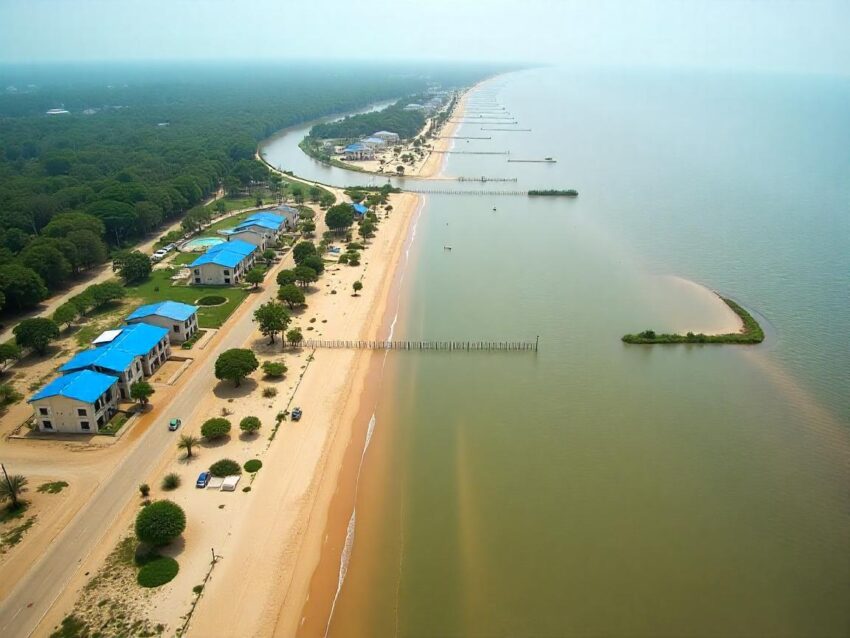South Korea Grapples with Record-Breaking Floods and Deadly Landslides as Intense Rainfall Devastates Western Regions and Strikes at the Heart of Local Communities


South Korea is facing one of the worst national disasters it has experienced, after record levels of rainfall have caused devastating floods and lethal landslides in the nation’s western provinces. The heavy rains, ranging from Gyeonggi to South Chungcheong, have wreaked widespread havoc not only to houses and other buildings but lives with the number of fatalities to increase. The relentless storms have swamped infrastructure, swamped homes and forced thousands of evacuations transforming once-thriving communities into disaster areas. With more rain on the way, officials are working to ease the catastrophic situation, but many areas are still severely affected.
Heavy rainfall unleashed devastating floods across South Korea’s western regions, resulting in significant casualties, extensive damage, and widespread disruptions. From early Wednesday to Thursday morning, torrential downpours battered multiple areas, including Gyeonggi and South Chungcheong provinces, leaving at least four people dead, according to local reports. Authorities confirmed the casualties by 6 p.m., as communities grappled with severe weather conditions.
In Gyeonggi Province, the cities of Pyeongtaek and Hwaseong experienced an extraordinary rate of precipitation, with more than 80 millimeters of rain per hour recorded on Thursday alone. This intense rainfall caused significant structural damage. In Osan, a city neighboring Pyeongtaek and Hwaseong, a catastrophic collapse of a 10-meter-high retaining wall tragically crushed a passing car, killing the driver, a man in his 40s.
The situation was similarly grim in South Chungcheong Province, particularly in Seosan, where one of the worst-hit cities, heavy rain submerged streets, and led to multiple fatalities. In the early hours of Thursday, a car was swept away by the flooding, drowning the driver, a man in his 60s. Later, at 11:25 a.m., authorities discovered another tragic death—an elderly man in his 80s—who drowned in the same area. Seosan’s rainfall intensity reached a peak of 114.9 millimeters per hour, marking it as the hardest-hit region.
At 9:35 a.m., a devastating landslide struck Cheongyang-gun, a county in South Chungcheong Province, burying two residents. Emergency services quickly reached the site, rescuing the injured and transporting them to a local hospital by 9:50 p.m.In Dangjin, South Chungcheong, fire officials found the body of an 80-year-old man who had drowned in a submerged basement.
The Ministry of the Interior and Safety’s Central Disaster and Safety Countermeasures Headquarters reported remarkable rainfall totals, with Seosan receiving 419.5 millimeters, Hongseong 411 millimeters, and Dangjin 376.5 millimeters. The coastal county of Taean, located west of Seosan, also saw more than 300 millimeters of rain. The constant downpours led to temporary evacuations of 79 households in the affected areas.
By Thursday morning, the heavy rains had prompted the evacuation of over 1,000 residents from their homes. In addition to the floods and landslides, schools across South Chungcheong Province were forced to close in cities such as Yesan and Hongseong. Public safety was further compromised as nearly 80 underpasses, riverside roads, and low-level bridges in the Chungcheong region were closed to prevent accidents.
The Korea Meteorological Administration issued heavy rain warnings for several areas, including Sejong, the Chungcheong provinces, and parts of Gyeonggi Province. A heavy rain warning is issued when more than 90 millimeters of rain is expected in three hours or 180 millimeters over 12 hours. Meanwhile, cities like Seoul, Incheon, Daejeon, and Gwangju were placed under heavy rain advisories, which are issued when 60 millimeters of rain is expected within three hours or 110 millimeters in 12 hours.
The torrential downpours triggered significant infrastructural disruptions. In Gwangju, the initial heavy rain advisory was upgraded to a warning by 10:10 a.m. on Thursday. Reports indicated that 87 roads and 38 buildings had been submerged by the floodwaters. In the southern region of North Gyeongsang Province, a landslide was also reported in Cheongdo-gun. Although a house was reportedly damaged, the full extent of casualties and damages was not yet confirmed.
Korea Railroad Corp. announced that train services between Seoul and cities in Chungcheong Province, such as Cheonan, Hongseong, and Cheongju, had been suspended. In addition, trains on the Honam Line, connecting Daejeon to Gwangju and South Jeolla Province, were also disrupted as of Thursday afternoon. The heavy rain also forced the closure of over 374 trails in national parks and led to the cancellation of 39 passenger ships from 31 sea routes.
As the situation intensified, the Ministry of the Interior and Safety upgraded the emergency response to the highest level, stage three, and issued a “severe” rain alert indicating a high-risk situation. Authorities instructed relevant agencies to closely monitor areas prone to landslides and flooding and advised evacuations as necessary.
South Korea is facing unprecedented flooding and deadly landslides as intense rainfall devastates western regions, causing significant damage and loss of life. Authorities are working tirelessly to manage the growing crisis, but the situation remains critical.
The national weather agency predicts that the heavy rainfall will continue to impact the region, with up to 300 millimeters of additional rain expected across the Chungcheong area and other southern provinces until Saturday. The situation remains critical, with authorities working tirelessly to mitigate the risks and provide relief to the affected communities.
The post South Korea Grapples with Record-Breaking Floods and Deadly Landslides as Intense Rainfall Devastates Western Regions and Strikes at the Heart of Local Communities appeared first on Travel And Tour World.






